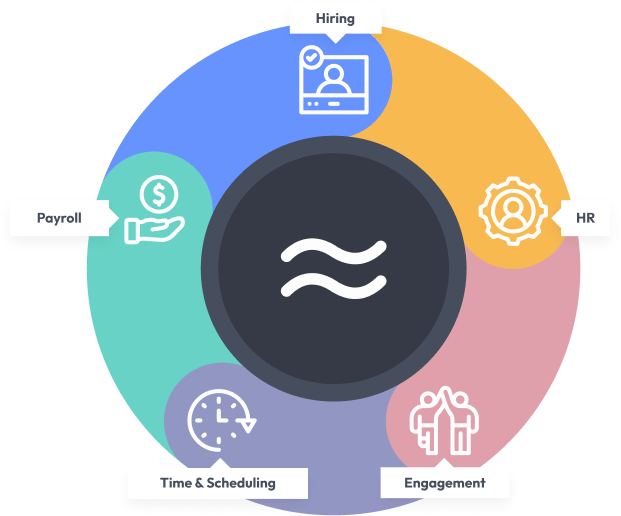How to Hire Entry Operators: A Practical Guide for Small Business Owners
If you ask me, finding the right people to hire entry operators is a bit like assembling a puzzle with pieces that all look the same—until you spot that one that just clicks. For small business owners, especially in industries like restaurants or retail where every hire counts, getting this right can mean the difference between smooth sailing and a paperwork storm. Let’s walk through the essentials of data entry hiring and entry level recruitment—with a few digressions and stories from the field, just to keep things lively.
Understanding the Role: What Makes a Great Entry Operator?
Defining Entry Level Operators
Before you post a job ad, it’s worth getting clear on what entry level operators actually do in your business. Are they focused on data entry, order processing, or maybe inventory tracking? The best operators are detail-oriented, reliable, and comfortable with repetitive tasks—think of them as the unsung heroes who keep the back office humming.
- Accuracy is everything—one typo can throw off an entire shift’s records.
- Speed matters, but not at the expense of quality.
- Comfort with technology is a must—even if it’s just spreadsheets and scheduling software.
Honestly, you’d be surprised how many businesses overlook the importance of a well-written employee handbook to set expectations for these roles. It’s a simple step, but it can save you headaches down the road.
Why Entry Level Recruitment Is Different
Let’s face it: entry level recruitment isn’t just about filling a seat. According to industry reports, turnover in entry-level positions can be sky-high, costing businesses thousands each year. That’s why it pays to look for candidates who aren’t just looking for a paycheck, but who want to grow with your company.
Curious about what keeps these employees happy? Surveys show that clear communication, fair scheduling, and opportunities for advancement are big motivators. It’s not rocket science, but it does require a bit of heart.
Crafting the Job Posting: Attracting the Right Data Entry Staff
Writing an Effective Job Description
Here’s the thing: a generic job ad won’t cut it. If you want to hire data entry staff who stick around, you need to be specific about what you’re looking for. Highlight the skills that matter—attention to detail, reliability, and a knack for numbers. And don’t forget to mention any perks or benefits, even if it’s just flexible hours or the occasional free lunch. For inspiration, check out these job posting examples that have worked wonders for other small businesses.
- Be upfront about expectations—hours, pay, and required skills.
- Use clear, friendly language. No one wants to read a wall of jargon.
- Call out growth opportunities—today’s entry operator could be tomorrow’s supervisor.
And if you’re not sure how to make your posting stand out, these creative tips can help you attract top talent, even in a crowded market.
Where to Post Your Job
Not all job boards are created equal. While Indeed and Craigslist are popular, don’t underestimate the power of social media—especially Facebook groups for local hiring. For more targeted results, explore free job posting sites that cater to hourly and entry-level roles.
The Interview Process: Screening and Selecting Entry Operators
Smart Screening and Interviewing
Screening candidates for data entry hiring can feel repetitive, but a few tweaks can make a big difference. Automated tools—like those offered by Workstream—can help you filter out unqualified applicants and schedule interviews without a dozen back-and-forth emails. This can literally shave days off your hiring timeline and cut down on interview no-shows by over 50%.
When you do get to the interview, focus on practical skills. Ask candidates to complete a short data entry test or walk you through how they’d handle a common scenario. And don’t forget to assess for cultural fit—after all, you want someone who’ll mesh with your team. For more on this, these cultural fit interview questions are a great resource.
Common Pitfalls to Avoid
- Rushing the process—desperation hires rarely work out.
- Ignoring red flags, like spotty work history or poor communication.
- Skipping reference checks. Even for entry-level roles, a quick call can reveal a lot.
And if you’re feeling overwhelmed, you’re not alone. Many owners are juggling hiring with a dozen other tasks. That’s why platforms like Workstream are designed to automate the busywork, so you can focus on what matters—building a great team.
Onboarding and Retention: Setting Entry Operators Up for Success
Streamlining Onboarding
Onboarding isn’t just paperwork; it’s your chance to make a good first impression. Digital tools can help you get new hires up to speed faster—think mobile-friendly forms, automated reminders, and easy access to training materials. For a smoother process, these onboarding templates can be a lifesaver.
And don’t forget compliance! The Department of Labor has strict rules about recordkeeping, even for entry-level staff. Staying organized now can save you big headaches (and fines) later.
Retaining Your Best Entry Operators
Retention is where the real savings happen. High turnover can cost your business thousands, not to mention the time spent training replacements. According to industry data, losing a single front-line employee can set you back nearly $6,000. Ouch.
So, how do you keep your best people? Offer clear paths for advancement, recognize hard work, and create a positive work environment. For more on reducing turnover, this guide breaks down the main causes and solutions, while this article explores the true cost of turnover in restaurants.
Conclusion: Building a Strong Foundation with the Right Entry Operators
Hiring entry operators doesn’t have to be a headache—or a guessing game. With a clear understanding of the role, a thoughtful recruitment process, and the right tools, you can build a team that keeps your business running smoothly, day in and day out. And if you’re looking to save time, money, and a little bit of sanity, platforms like Workstream can help you automate the grind and focus on what really matters—growing your business and supporting your team.
For more practical tips on hiring automation, writing standout job ads, and onboarding new hires, check out the resources below. And remember, every great business starts with a single, well-chosen hire. Why not make your next one your best yet?






